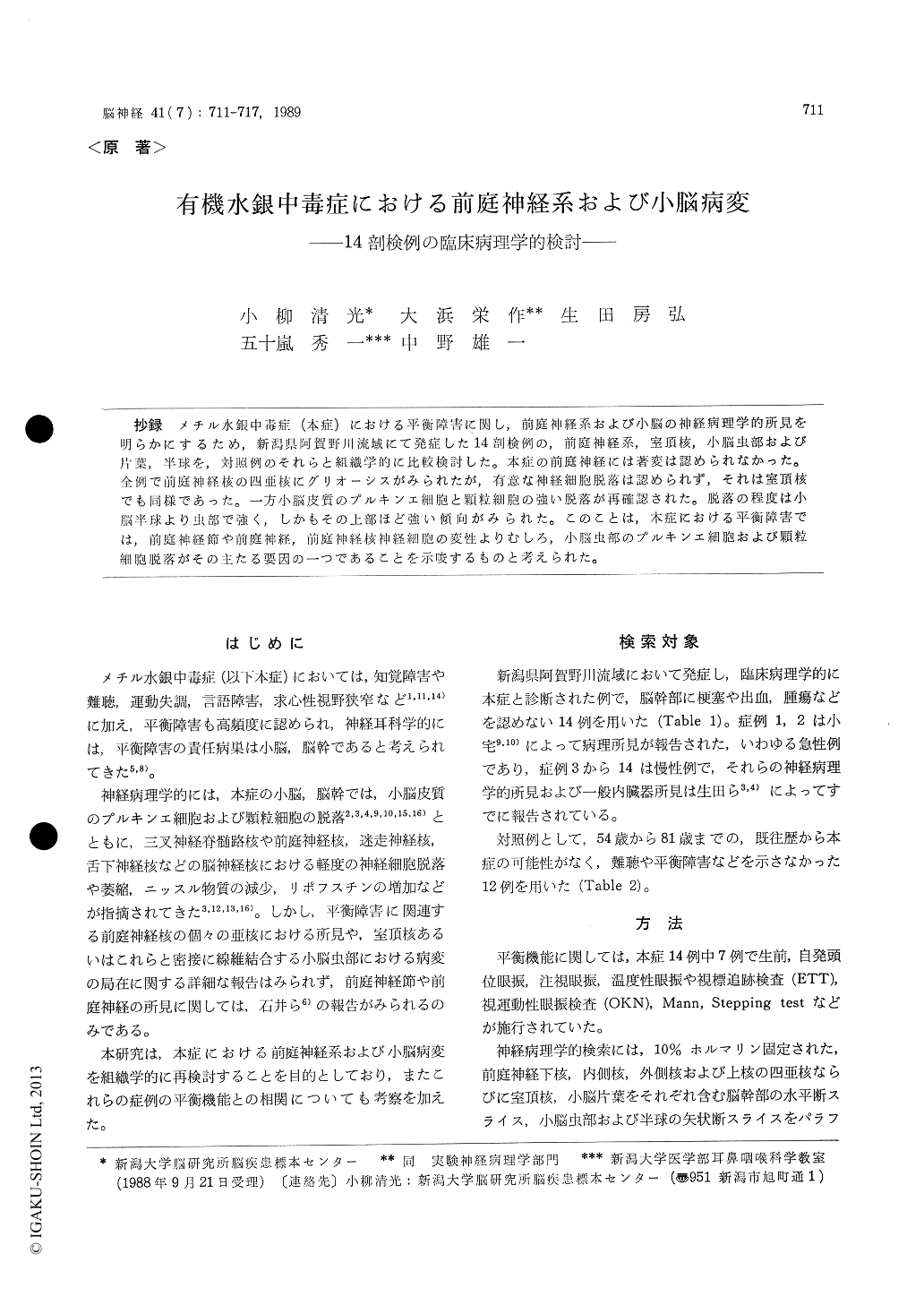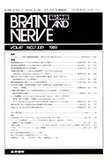Japanese
English
- 有料閲覧
- Abstract 文献概要
- 1ページ目 Look Inside
抄録 メチル水銀中毒症(本症)における平衡障害に関し,前庭神経系および小脳の神経病理学的所見を明らかにするため,新潟県阿賀野川流域にて発症した14剖検例の,前庭神経系,室頂核,小脳虫部および片葉,半球を,対照例のそれらと組織学的に比較検討した。本症の前庭神経には著変は認められなかった。全例で前庭神経核の四亜核にグリオーシスがみられたが,有意な神経細胞脱落は認められず,それは室頂核でも同様であった。一方小脳皮質のプルキンエ細胞と願粒細胞の強い脱落が再確認された。脱落の程度は小脳半球より虫部で強く,しかもその上部ほど強い傾向がみられた。このことは,本症における平衡障害では,前庭神経節や前庭神経,前庭神経核神経細胞の変性よりむしろ,小脳虫部のプルキンエ細胞および顆粒細胞脱落がその主たる要因の一つであることを示唆するものと考えられた。
The vestibular system consisting of vestibular ganglion, nerve and inferior, medial, lateral and superior nuclei and fastigial nucleus, cerebellar vermis, flocculus and hemisphere in 14 autopsy cases of methyl mercury intoxication in Niigata and 12 age-matched controls were examined neuropathologically. The findings were evaluated semiquantitatively, that is, ? ; normal, ± ; gliosis alone, + ; loss of neurons or myelinated fibers less than about 40%, + + ; loss of neurons from about 41 to 80%, + + + ; loss of neurons more than about 81%. The results were compared to the records of the equilibrium function of those patients.
The examinations on the equilibrium function revealed positive findings in the optokinetic and positional nystagmus, eye tracking, Mann or Step-ping test in many of the patients.
There were no remarkable histological altera-tions in the vestibular ganglion and nerve of the patients. Moderate and diffuse gliosis with slight shrinkage of neurons were observed in the ves-tibular and fastigial nuclei of all the patients. Slight loss of neurons in various vestibular nucleiwas examined in only 4 patients. The fastigial nucleus showed no evident loss of neurons. In contrast, the cerebellum showed diffuse loss of Purkinje and granule cells, the degree of which was higher in the vermis than in the hemisphere and the flocculus.
In the controls, the vestibular nerve and nuclei showed no remarkable alteration even in eight decade subjects. However, the Purkinje cells in the vermis seemed to have a tendency to decrease in aging.
The dysequilibrium in the patient of methyl mercury intoxication did not seem to be corre-spond to the degeneration of the vestibular ganglion, nerve or nuclei. The above-mentioned clinico-neuropathological findings suggested that the gliosis and shrinkage of the neurons in the vestibular and fastigial nuclei of the patient seemed to be caused by severe loss of neurons in the vermis, and the dysequilibrium in the patients was mainly due to degeneration of the vermis.

Copyright © 1989, Igaku-Shoin Ltd. All rights reserved.


